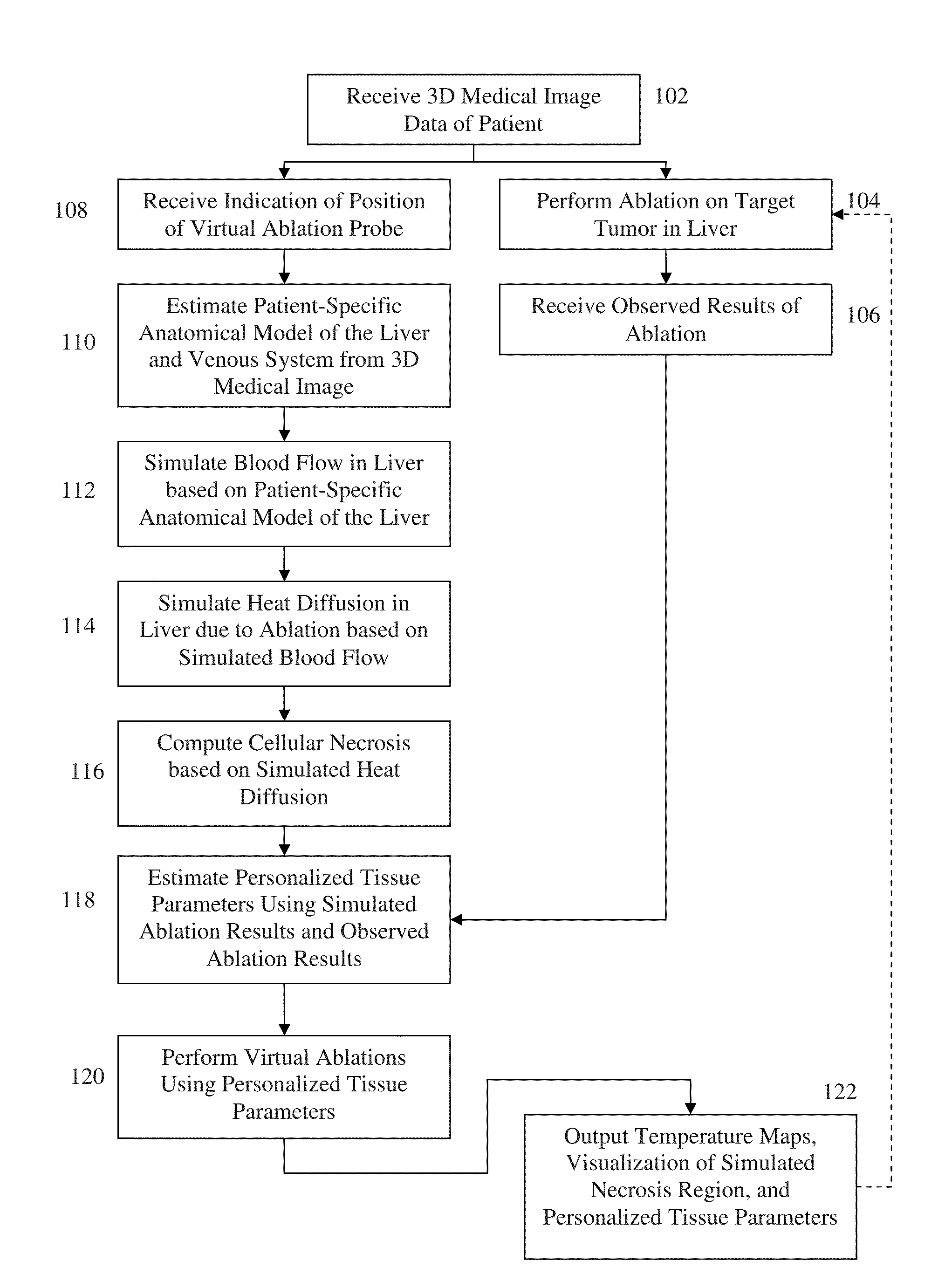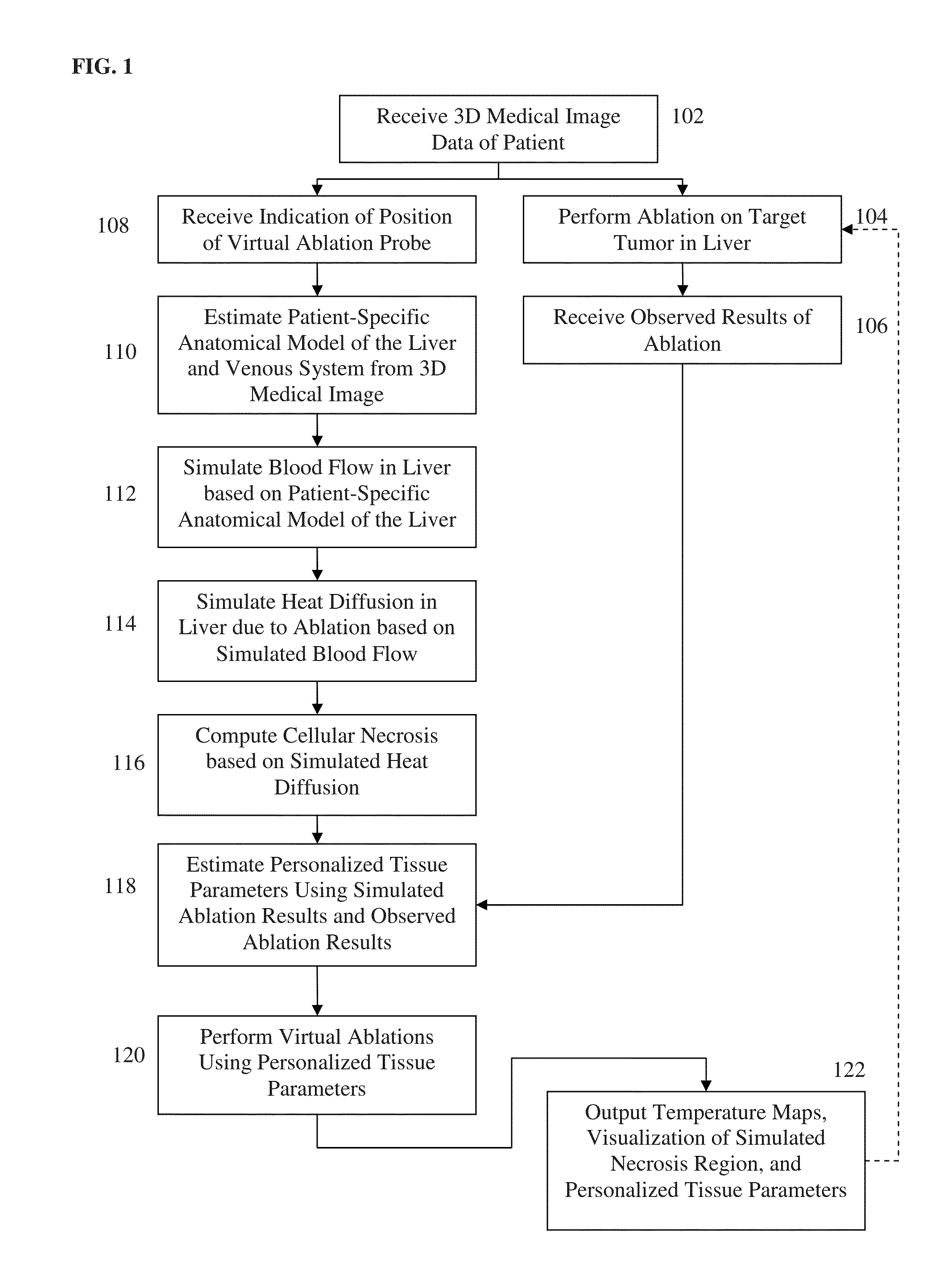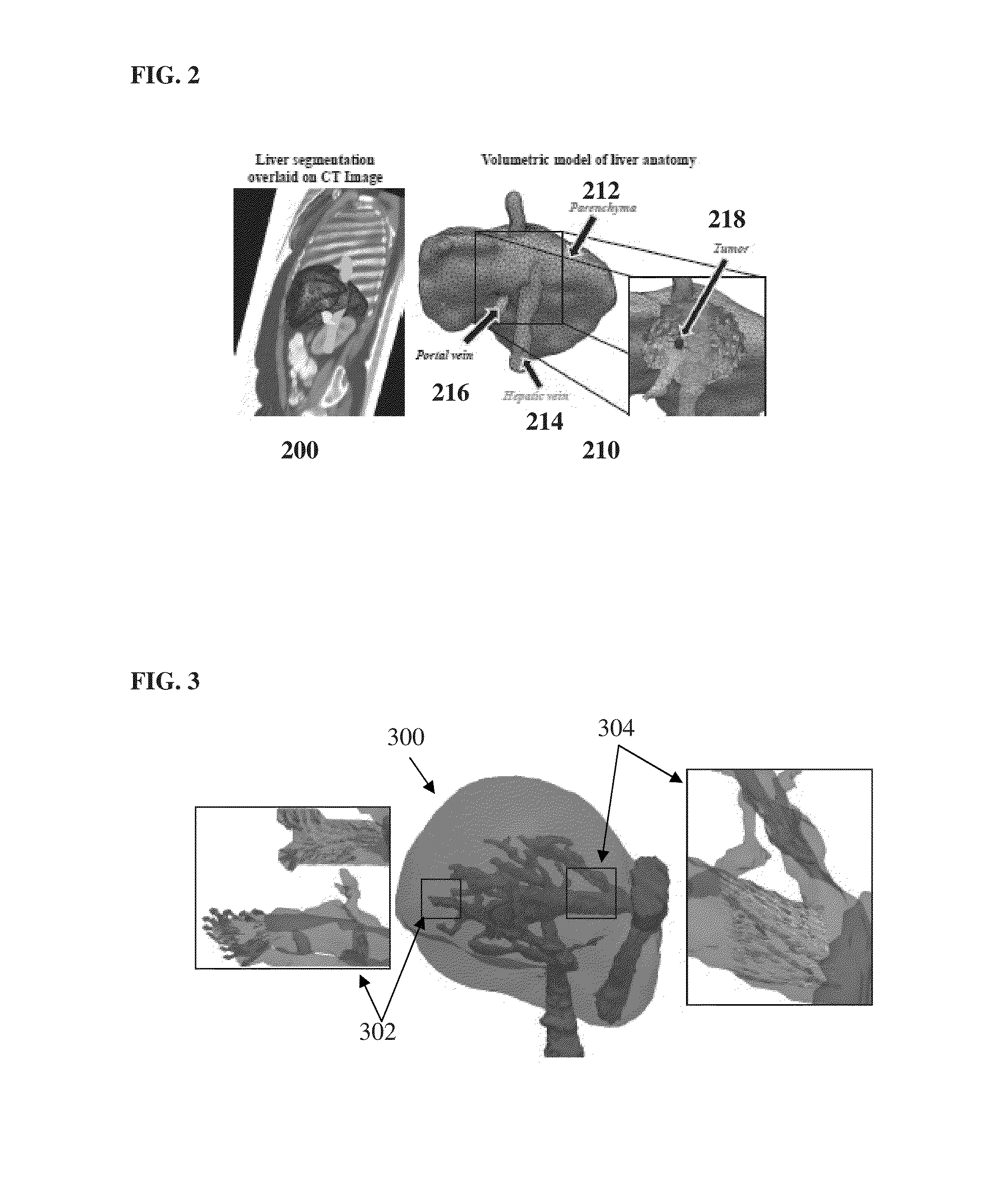System and Method for Personalized Computation of Tissue Ablation Extent Based on Medical Images
a technology of medical images and tissue ablation, applied in the field of patient-specific simulation of tissue ablation using medical imaging data, can solve the problems of reducing the efficiency of rfa, less than 25% of patients with primary tumors, and a significant challenge in the treatment of primary and metastatic tumors of the abdomen, and achieve accurate pre-ablation planning
- Summary
- Abstract
- Description
- Claims
- Application Information
AI Technical Summary
Benefits of technology
Problems solved by technology
Method used
Image
Examples
Embodiment Construction
[0014]The present invention relates to patient-specific modeling and simulation of tumor ablation using medical imaging data for therapy planning and guidance. Embodiments of the present invention are described herein to give a visual understanding of the methods for patient-specific modeling and simulation using medical imaging data, exemplified on the case of liver tumor. However, the same approach could be employed to other tumors that can be treated through ablation therapy. The proposed invention could also apply to other ablation techniques that rely on heat delivery. A digital image is often composed of digital representations of one or more objects (or shapes). The digital representation of an object is often described herein in terms of identifying and manipulating the objects. Such manipulations are virtual manipulations accomplished in the memory or other circuitry / hardware of a computer system. Accordingly, is to be understood that embodiments of the present invention ma...
PUM
 Login to View More
Login to View More Abstract
Description
Claims
Application Information
 Login to View More
Login to View More - R&D
- Intellectual Property
- Life Sciences
- Materials
- Tech Scout
- Unparalleled Data Quality
- Higher Quality Content
- 60% Fewer Hallucinations
Browse by: Latest US Patents, China's latest patents, Technical Efficacy Thesaurus, Application Domain, Technology Topic, Popular Technical Reports.
© 2025 PatSnap. All rights reserved.Legal|Privacy policy|Modern Slavery Act Transparency Statement|Sitemap|About US| Contact US: help@patsnap.com



